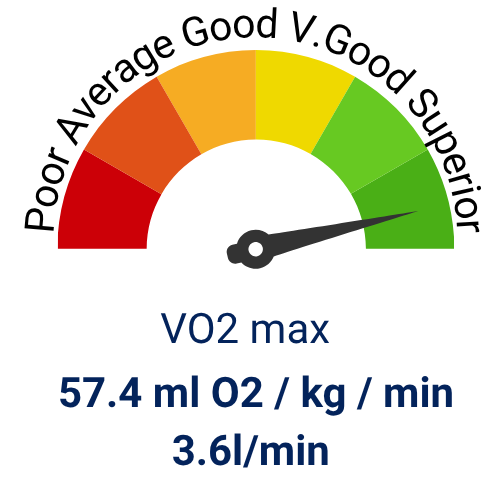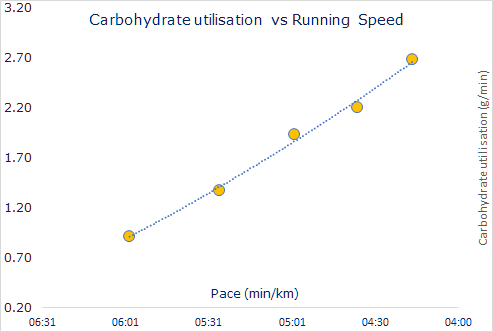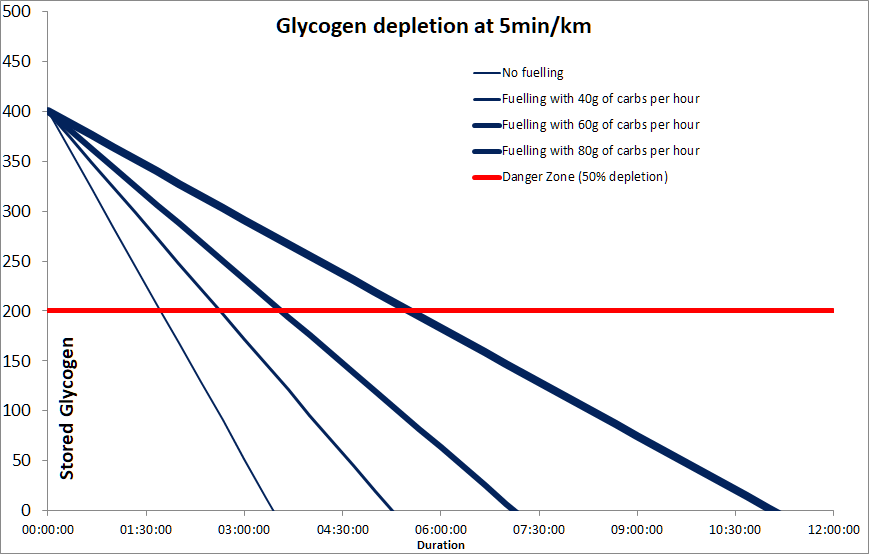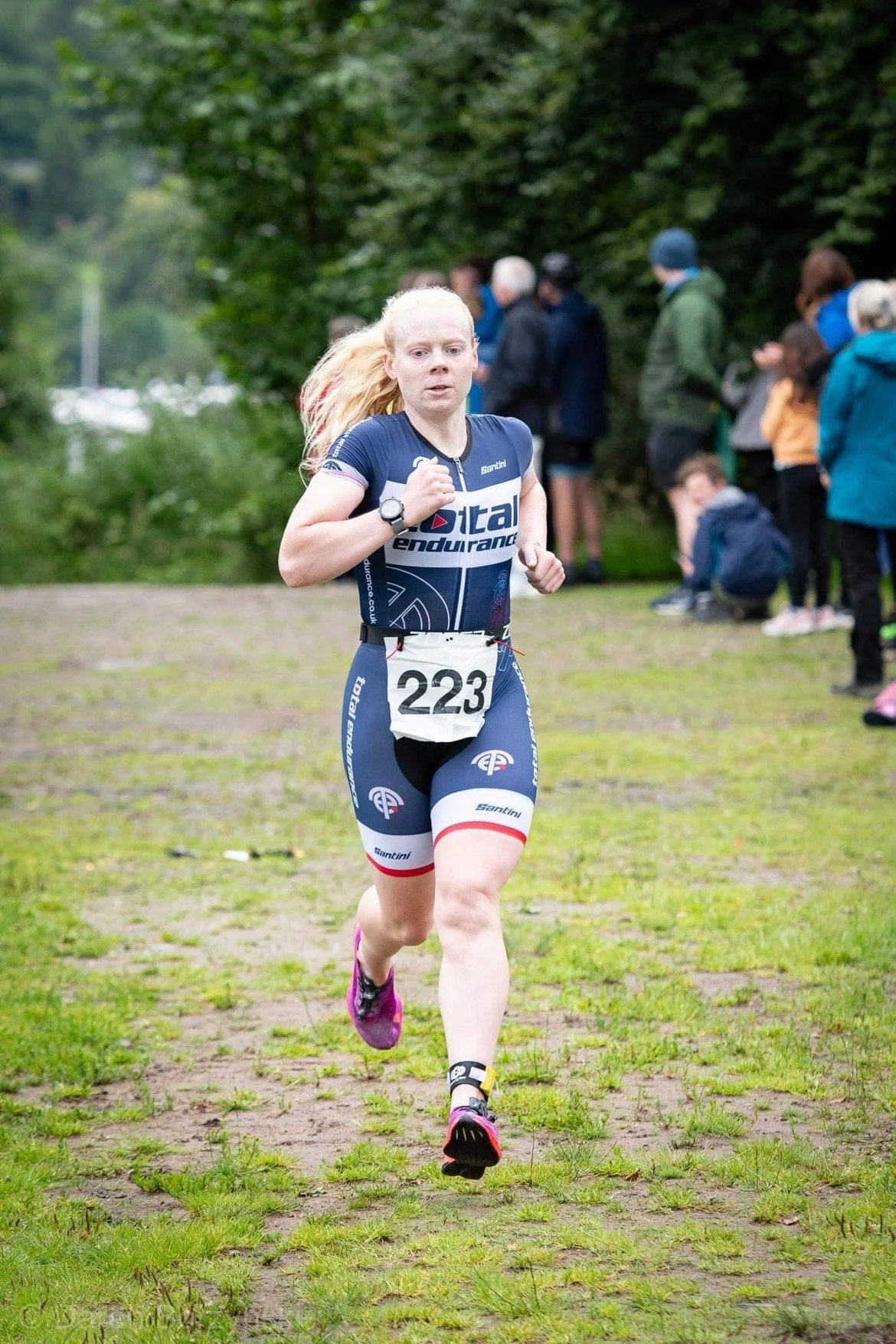Nicoles Road to Ironman Barcelona
In this blog we look into the data we recently gathered from one of our athletes, Nicole Campbell, and how we’ll use these insights to help her maximise her performance at Ironman Barcelona in just 12 weeks.
Nicole's Case Study: From Data to Direction
Nicole is an experienced athlete with a strong swimming background (sub-10min for 750m) and solid bike numbers (FTP ~230w ~60kg). As she prepares for her first Ironman, we wanted to assess her physiology to fine-tune her run training and build a sustainable race strategy and ensure we understand what factors may inhibit a performance she is capable of.
Key Testing Insights:
VO2 Max: 57.4 ml/kg/min at 17.5 km/h. Strong aerobic engine.
Anaerobic Threshold: 46.8 ml/kg/min (81% of VO2 max) at 14 km/h (4:17min/km). Good, but not optimal for a strong Ironman marathon.
Aerobic Threshold: 38.8 ml/kg/min (67% of VO2 max) at 10 km/h (6:00/km). Ok, but a key area to develop to improve performance
Running Economy: Averaged 220–240 ml/kg/km (average range). (read more about running economy here)
Fuel Usage: High carbohydrate usage.
What the data reveals about Nicole
VO2 max
Strong Aerobic Capacity: Nicole has a strong VO2 max. This metric represents the maximum amount of oxygen her body can utilise during intense exercise, and her score places her firmly in the "Superior" category. This is a fantastic foundation, indicating a highly efficient cardiovascular system capable of delivering ample oxygen to working muscles.
Anaerobic Threshold (AT)
Moderate level of Anaerobic Threshold (Pace: ~4:17/km): Her anaerobic threshold pace is impressive, indicating her ability to maintain a relatively high intensity for extended periods before lactate accumulation significantly impacts performance. This is a good indicator of her current fitness and her capacity for sustained effort. However, at 81% of her VO2 max it is at the lower end of where it could be and a key metric to improve to allow her to tap into her strong engine more effectively.
Aerobic Threshold (AeT)
Less than optimal Aerobic Threshold (38.8 ml/kg/min at 10 km/h): Nicole's Aerobic Threshold (AeT) is measured at 38.8 ml/kg/min, which corresponds to a pace of 10 km/h. This is the point at which her body primarily uses fat for fuel, and beyond which carbohydrate reliance significantly increases. At just 67% of her VO2 max it indicates room for improvement. For an Ironman, which is predominantly an aerobic event lasting many hours, having a higher aerobic threshold allows the ability to maintain a faster pace while still predominantly burning fat, thus sparing precious glycogen stores.
Running Economy
Average Running Economy (224-228ml/kg/km): This is a critical area for improvement. Running economy measures how efficiently Nicole uses oxygen at a given pace. An "average" score means she's expending more energy (and thus more oxygen) than an elite runner might at the same speed. Improving this means she can run faster at the same physiological cost, or maintain her current pace with less effort, which is invaluable over an Ironman marathon.
Energy Substrate utilisation
Fat Oxidation (High carbohydrate reliance when running faster than 6min/km pace: The data indicates a high reliance on carbohydrates above a relatively slow pace of 6min/km. The goal for Ironman is to maximize fat utilization at race-relevant paces to delay fatigue and prevent the dreaded "bonk." This is a key area where focused training can yield significant gains in endurance performance.
Graph shows rate fat is being oxidised at different speeds.
Graph showing Carbohydrate utilisation at different speeds
The above graph shows the rate at which Nicole is using fat and carbohydrate (in grams per hour) at different velocities. The horizontal orange bar represents the commonly suggested range for most athletes (60-90g per hour). When carbohydrate utilisation exceeds this threshold, glycogen will begin to be depleted faster than it can be replenished, increasing the risk of running out of available energy during longer events.
The above graph estimates the rate at which stored glycogen is being depleted. It assumes a starting store of 400 grams and while running at a steady intensity (5min/km) under various fuelling scenarios.
The ‘Danger Zone’ refers to the point at which around 50% of glycogen stores have been used. Crossing this threshold significantly raises the risk of experiencing a sharp decline in performance, often referred to as “bonking.”
It’s important to recognise that fuel usage and nutrient absorption vary between individuals and can be affected by fitness level, environmental conditions, and training history. These graphs offer guidance, not precise predictions but give a good guide to reference for training and race day nutrition.
Based on this data at 60g of carbohydrates per hour we’d expect Nicole to start to struggle after ~3:30 which is around the duration we’d expect to be attainable. However, this assumes she gets off the bike with a well topped up store of glycogen (unlikely in an Ironman) and if she has burned through a chunk of her glycogen stores on the bike, hitting the wall will likely occur before the end of the run. Therefore, using this data as a guide we need to target >60g/hour if running this pace and within the next 12 weeks we want to test what her gut is realistically able to handle.
Understadning whats possible for Ironman Run pace
The graph above shows how we can estimate whether the target Ironman marathon pace is sustainable based on the runners running economy and VO2 max.
For long events like Ironman, VO₂ max often gets downplayed. You’ll hear people say, “VO₂ max doesn’t matter for endurance athletes”.
Your VO₂ max still sets your aerobic ceiling, it defines how much oxygen your body can use at maximum effort. While it becomes less of a direct performance predictor as race duration increases, it remains a crucial piece of the puzzle.
What matters just as much, especially for long events — is running economy. That simply means how efficiently you use oxygen to maintain your pace. The better your running economy, the less energy you burn to hold your speed.
When you combine both VO₂ max and running economy data, you get a complete picture of what’s realistically possible for your race pace.
Why This Matters for Ironman
Most athletes can sustainably race at around 60–70% of their VO₂ max during the Ironman marathon. Push harder than that, and fatigue builds fast, making it near impossible to hold pace to the finish.
Understanding the Graph
In the graph above:
The blue line shows the oxygen required to maintain different paces.
The dashed red line marks 70% of VO₂ max — the upper limit for a sustainable Ironman marathon.
The green zone shows the range of running economy needed to stay within that sustainable effort.
If you’re in the red zone, your running economy isn’t efficient enough — meaning you’d be working too hard to hold that pace for 26.2 miles off the bike.
Nicole’s current data shows her running economy places her outside the green zone. At her target marathon pace, she’s using more oxygen than is sustainable for an Ironman run, which means she’d likely struggle to hold that pace off the bike.
This is something we often see with athletes who have a strong aerobic engine — their VO₂ max is good, so they can run fast, especially over shorter distances where they can afford to push harder. But for long events like Ironman, that approach isn’t enough.
To maximise performance, it’s not just about how big the engine is — it’s about how efficiently you use it. Improving running economy means reducing the oxygen cost at sub-max efforts, so you’re burning less energy to hold your pace. The more efficient you become, the easier it is to stay strong deep into the marathon.
Key Areas to improve to achieve her Ironman goal
Improving Running Economy
Using specific strength work to improve neuromuscular efficiency and get more elastic return from her running form.
We will focus on sub-threshold tempo runs and brick sessions to develop efficiency at race pace.
Fuelling Strategy
Knowing she burns 120-160g/hr at high intensity, we need to develop a race-day plan and experiment with higher carb intake to see if her gut can handle 60-90g/hr
Focus on improving her aerobic conditioning to lift her Aerobic threshold and improve her ability to burn fat for fuel at race intensity.
Realistic Pacing Targets
Using the data we can ensure the pace she is training at is right based on current fitness and not running the endurance sessions to hard, which can be hard to do especially when the athlete has such a strong aerobic capacity. As running faster doesn’t feel hard but its too hard for the Aerobic system to adapt optimally.
Now, the challenge is set, we’ve got the data, and we know exactly where Nicole is right now, along with the steps needed to move her closer to her Ironman goals. Having this level of insight doesn’t just guide the training — it brings clarity and confidence. Every session has purpose, and we’re working from where she is now to where she wants to be.
Want to improve our own Endurance Running?
If you want help understanding what steps you need to make to improve, our Endurance Running Assessment provides the data to help you improve pacing, reduce fatigue, and race with more confidence.










